A new report from the Reuters Institute provides insight into how readers around the world are thinking about the place of generative AI in their news. The study cast a wide net, surveying the general public in six countries: Argentina, Denmark, France, Japan, the UK and the US.
There has been much debate about the true generative impact AI has already had on news publishing. But among the public, the perception is relatively strong that generation is currently being widely used and will only continue to change the industry.
On average across the six countries, the majority responded that journalists currently “always” or “sometimes” use generative AI “with some human oversight.” This remains true across 11 different editorial tasks, including writing the text of an article, creating AI-generated images to use in place of photos, analyzing data, copywriting, and writing headlines.
Looking ahead, 66% of respondents also said they expect generative AI to have a “very or somewhat large impact” on the news media industry.
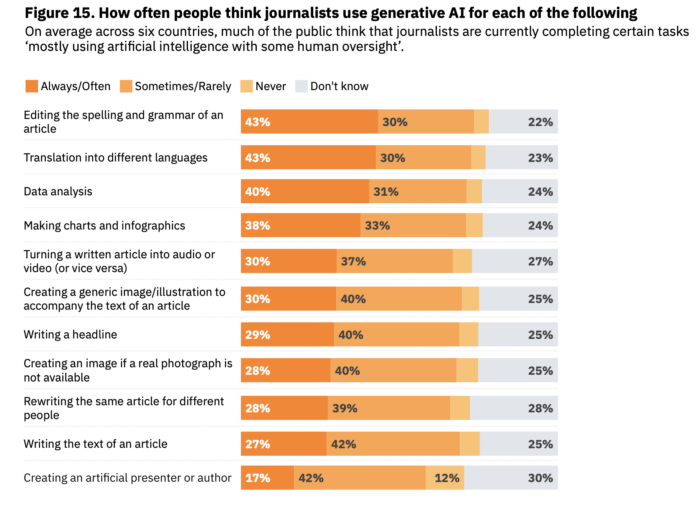
The study’s outlook is bleak though when it comes to perceptions of whether generative AI will make news media better or worse. Scientific research, health care and shopping received mostly positive responses. Meanwhile, news and journalism received the second least positive view among the 14 categories, sandwiched between “equality” and “job security.”
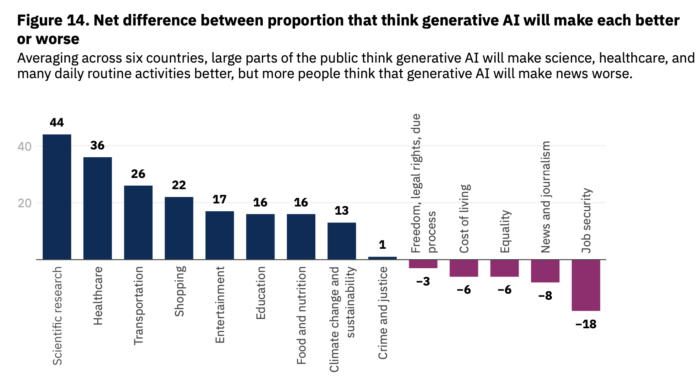
Despite this general pessimism, comfort levels with AI adoption vary significantly depending on the task being undertaken by journalists. The study could be made granular, breaking down the editorial process into different parts. People were on average more satisfied with AI tools used to do basic editing (+38%) and translating stories into other languages (+35%). However, more people were satisfied with using AI to write headlines (+16) or produce an audio or video version of a written article (+15) than not.
However, when it comes to producing the core elements of a story, that feeling begins to change. -1% of people were satisfied with the AI tools used to write body text. -13% for using an AI generated image when a photo is not available. And -24% for creating an author or artificial person to write and present the news.
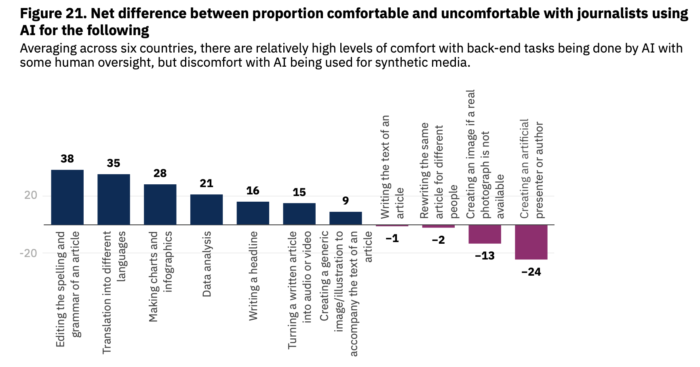
These comfort levels also varied greatly based on the pace at hand. People were relatively comfortable using generative AI to produce stories on fashion, sports and arts and culture coverage. This changed substantially when it came to using generative AI to produce stories on topics such as international affairs, and especially, politics.
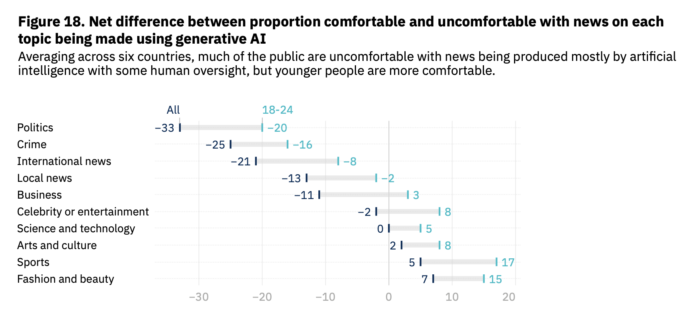
Regardless of whether or not respondents were satisfied with stories written using AI tools, there was an overwhelming opinion that AI-generated news wasn’t worth their dollar, yen or euro. Only 8% of people thought that news produced by AI is worth paying more for, compared to news produced by a human.
Respondents also said, in general, that they thought news produced using AI, “with some human oversight,” would be cheaper to make. 33% of respondents answered as such on average in all six countries. This is a window into the perceived purpose behind the adoption of AI in the news media. Outwardly, readers seem to think that a driving factor in bringing generative AI to the newsroom is cost reduction.
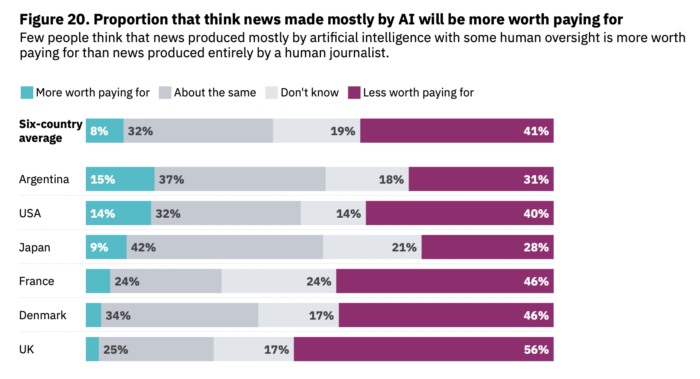
News publishers who adopt AI may flirt with eroding the already delicate trust they’ve built with their readers. Respondents felt that news produced using AI would be, on the net, less credible.
Across 12 different industries, news media was also on average one of the least trusted industries to use generative AI responsibly. Those who trusted the news media “strongly” or “somewhat” on this point ranged from 12% in the UK to 30% in Argentina. In most cases, its credibility was only tracked by “national government”, “social media companies” and “politicians and political parties”.
#People #dont #trust #news #media #generative #responsibly #RISJ #finds
Image Source : www.niemanlab.org